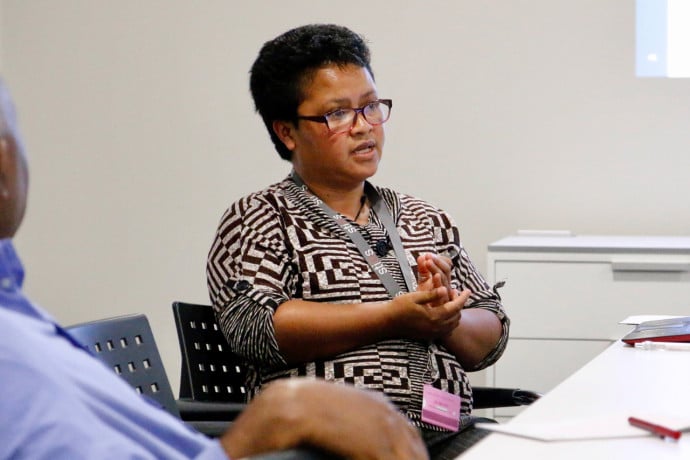“Insecticides are still the cornerstone of vector control. But there are limited options available, very few new insecticides are commercialised and resistance is a big problem,” said Fara Raharimalala of the Medical Entomology Unit at the Institut Pasteur de Madagascar. Raharimalala was presenting a seminar on her Iso Lomso study on the Adaptation of mosquito vectors to insecticides used in the Southwest area of the Indian Ocean and the implications for vector control.

“I am looking at insecticidal resistance in two mosquito species: Aedes albopictus, the main arboviruses vector and Anopheles arabiensis, which is the main malaria vector, on five islands – Comoros, Madagascar, Mauritius, Reunion and the Seychelles.”
“Mortality caused by mosquito vectors remains high in African countries. Vector control contributes significantly to the reduction of malaria and other diseases including Dengue, Chikunguya and Zika. However, vector control is dependent on the use of limited numbers of effective chemical insecticides.”
“Resistance is a real problem – mostly linked to overuse of the same insecticide type,” she continued. “To maintain protection conferred by chemical insecticide to vector control, it’s crucial to preserve the efficacy of the few insecticides currently available. It requires timely resistance surveillance and management strategies until other options become available.”
Lack of data
To date little is known about resistance in the Indian Ocean area. Until 2004 DDT was mostly used but now there are a number of insecticide options.
“We also know that the best insecticides are not necessarily chosen for poorer countries,” said Raharimalala, “usually cheaper options are used that don’t necessarily take into account the real situation in the country. There has been very little knowledge of resistance in this region until now. There are also specific ecological factors linked to islands that have an influence on vectors and the reaction to them which we need to understand in more detail.”
Some of the main factors which influence resistance include the frequency of application, the dose and durability of the effect, the reproduction rate and the isolation of the population.
“Good use of insecticides and, in particular, alternating their use to confuse the mosquitoes, does not cause resistance so they must be used carefully.”
“People think entomologists just run after insects,” she laughed, “but it includes laboratory work, field management and experience, and identifying insect species. In this study we needed some sophisticated methodologies.”
“Because of a lack of effective markers, we used next generation sequencing to identify new molecular markers allowing us to map mechanism resistance in these two species and to identify detoxifying enzymes in larvae and adult mosquitoes.”
“We confirmed resistance at less than 90% mortality and found that all the populations studied had possible confirmed resistance in all the sites studied.”
“This means we have baseline information so far on insecticide resistance and unravelling mechanisms in populations of Aedes albopictus.”
Commenting on other options for disease control including human vaccines, sterilisation and bacterial control of mosquitoes and also the creation of transgenic (genetically modified) mosquitoes, Raharimalala described some of these as very expensive options and highlighted that the impact is not yet known. “The first level remains to protect the human population with vector control, especially in Tropical regions,” she said.
“You can’t change all species of mosquitoes,” she added. “They are very quick to adapt. If you kill one species another quickly takes its place. If you use nets and insecticides in houses you find they start biting outside and at different times of the day.”
And of course, insecticide use is a big business. “We have shown resistance at three sites to an insecticide that was seen as the magic solution. I was warned to be careful about the results because they could affect sales.”
Michelle Galloway: Part-time media officer at STIAS
Photograph: Christoff Pauw
